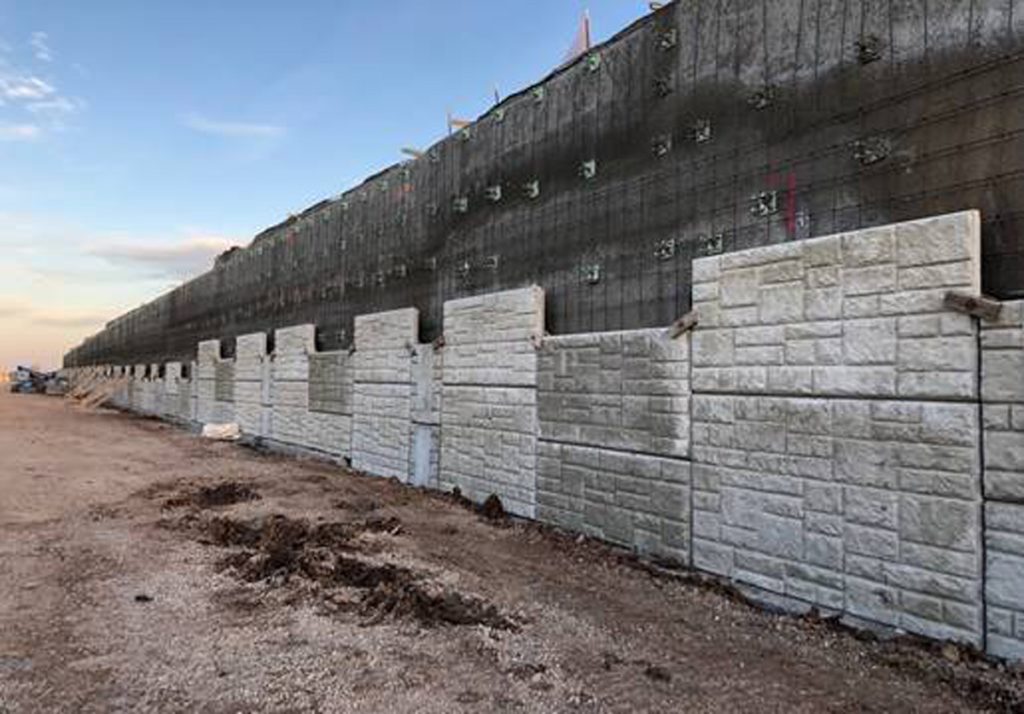Technology and engineering have come a long way in building durable, sustainable retaining walls. Traditionally, the best way to build a retaining wall to hold back soil, dirt, and other things was with a literal wall. However, now there are alternative options for retaining walls, such as soil nails, which can save time, money, and materials.
If you’re curious and want to know more about what soil nails are and how they’re used in retaining walls, you’ve come to the right place. Slaton Bros in Denver is here to help with any retaining wall questions and needs. Contact us online or call (303) 806-8160 to learn more about our services.
What is Soil Nailing, and How is It Used in Retaining Walls?
Soil nailing is a form of soil and retaining wall reinforcement that uses “soil nails” rather than a physical retaining wall. Soil nailing is typically utilized along hills and slopes that pose a threat to landslides. You can also use soil nailing to reinforce slopes and hills near freeways, bridges, dams, and much more. Here’s how the soil nailing process works.
- Starting from the top and moving down, a large auger drills holes into the side of a hill or slope.
- The holes are usually several inches in diameter and up to fifteen feet deep.
- The holes are drilled at a slight angle.
- The auger gets retracted, removing all the dirt and debris with it.
- The engineers then drill a grouted, steel-plated screw or nail into the hole in the earth.
- The nail provides ample reinforcement so that the soil doesn’t collapse or slide on itself.
- Essentially, soil nailing turns the side of a hill or slope into its own retaining wall.
Using this top-down method, soil nailing can be just as effective and durable as physical retaining walls, sometimes even more so. While the nails used in soil nailing aren’t actually made of soil, the process gets its name because you’re drilling nails into the soil.
You can also implement soil nailing into existing retaining walls. For instance, let’s say that there’s a retaining wall sitting atop a slope, and the area below the wall needs stabilization. Rather than building a second retaining wall, you can reinforce the area with soil nails.
Advantages of Using Soil Nails in Retaining Walls
Like all types of retaining walls, there are certain advantages and disadvantages to using soil nailing. Here are the upsides.
- It’s much cheaper than building a retaining wall because you need fewer materials.
- Soil nailing is faster and more efficient than building a retaining wall.
- Soil nailing is great in tight spaces when you can’t bring big machinery into an area.
- Soil nailing is more eco-friendly because of the limited resources it requires.
- You can maintain the integrity and stature of a hill or slope.
- Soil nailing is great for many different implementations.
Alternatives to Soil Nailing
If you’re not sold on soil nailing but want to use something other than a retaining wall, you have options.
- Pile driving
- Physical retaining walls
- Compact grouting before excavation
- Laying back the slope
However, many of these options are less effective, permanent, or durable than soil nailing, making it the preferred option if you don’t want to build a retaining wall.
Who to Call For All Your Soil Nailing Needs
If you think that soil nailing is the right retaining wall option for you, Slaton Brothers is here to help. We’re a leading soil nailing and retaining wall contractor in Aurora and the surrounding area. We’ll help you evaluate your retaining wall options and guide you to the right decision. Contact us online or call (303) 806-8160 today!
